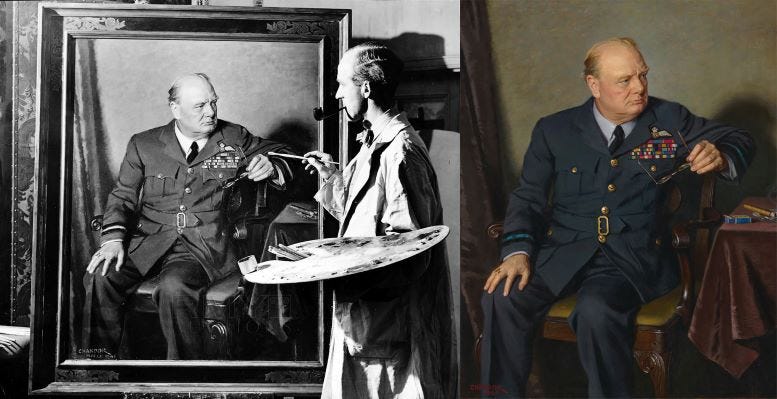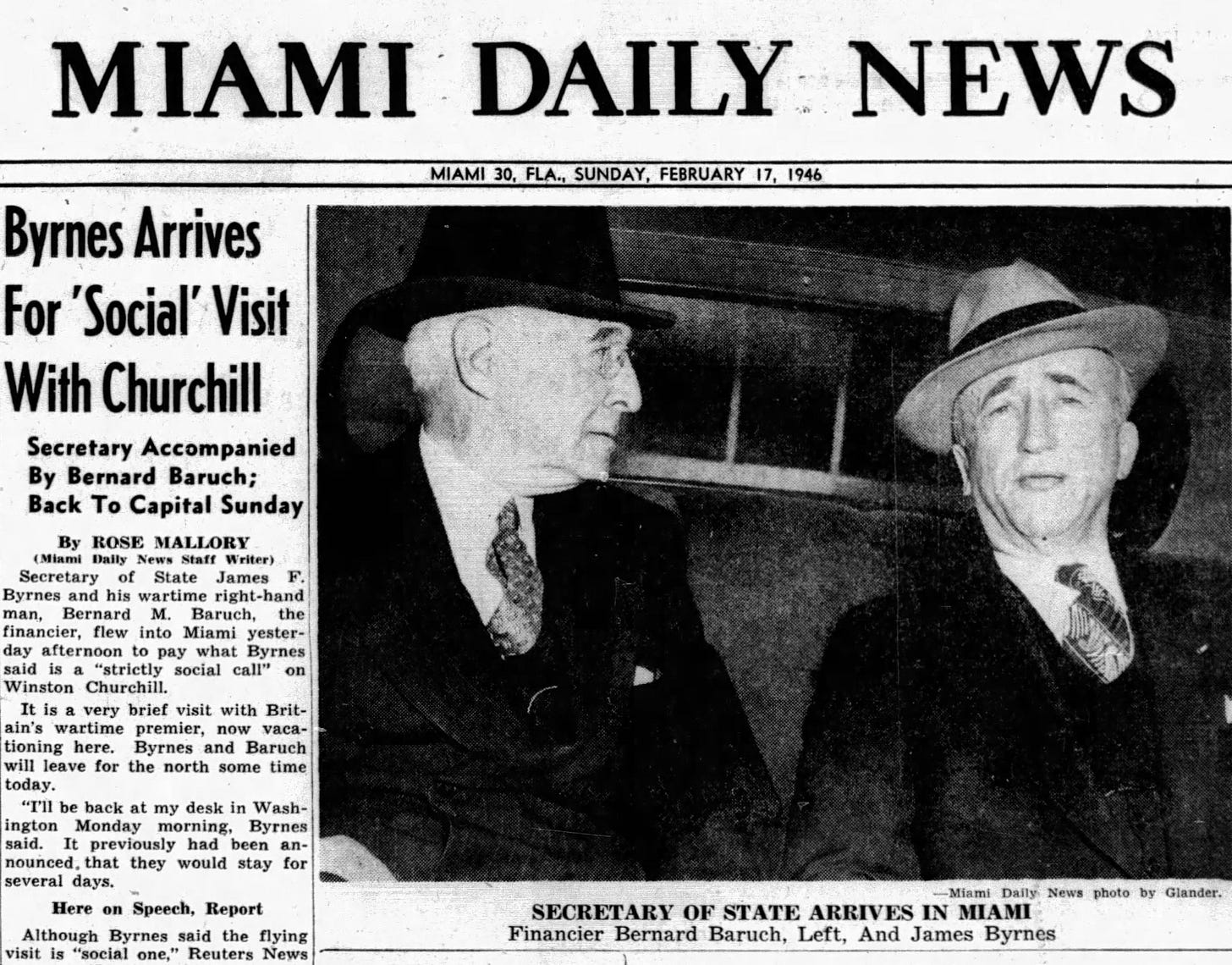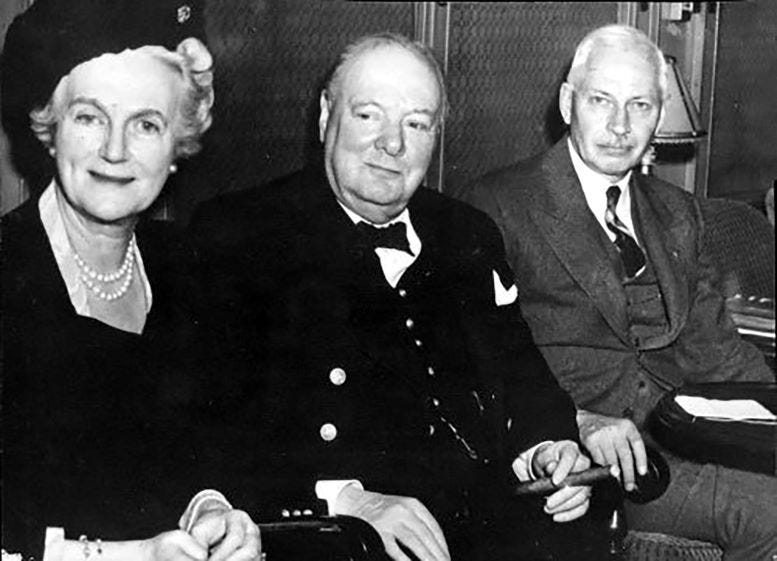Winston Churchill’s South Florida Visit in 1946 – Part 2 of 2
Winston Churchill's visit to South Florida in 1946. This second article of a two-parts series chronicles the great statesman's stay in Miami Beach and activities around the Greater Miami area.
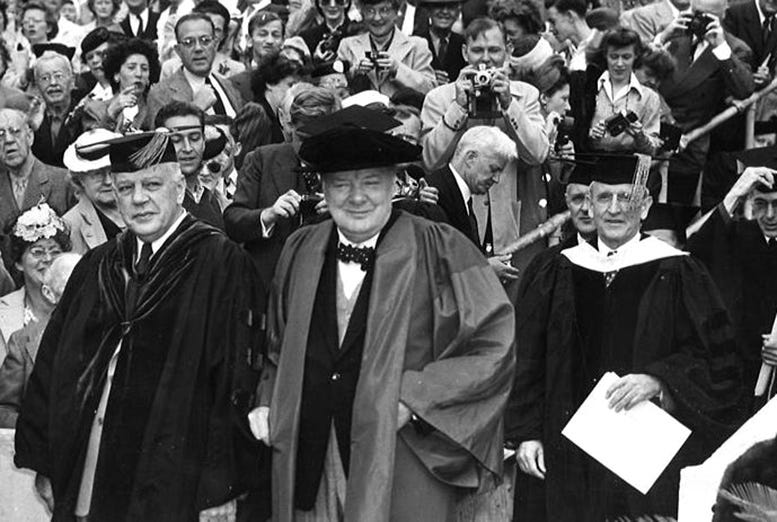
After returning to the Clarke’s residence on Miami Beach, Churchill learned that President Truman needed to cancel his trip to South Florida. The president was dealing with several critical issues including a national steel strike and believed it would not have been prudent to begin a vacation in Florida at the time.
The two men had plenty to discuss, including the content and nature of the speech Winston was scheduled to deliver at Westminster College in Fulton, Missouri. Once the former prime minister arrived back at his temporary home on Miami Beach on Friday, February 8th, his team began planning a trip to Washington, DC, for Churchill to meet with the president.
Meeting with President Truman in February
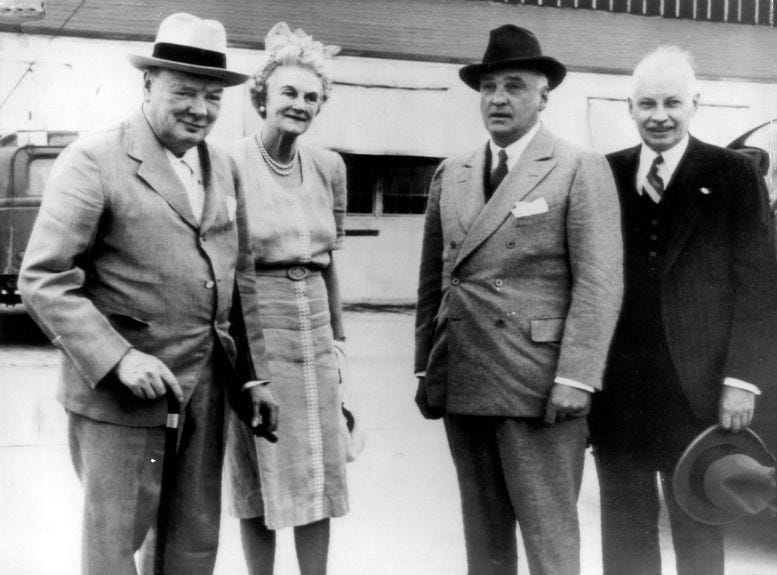
During a press conference held on Monday, the president’s press secretary, Charles G. Ross, informed reporters that the primary topic of discussion between President Truman and Churchill had been the latter’s upcoming speech. Ross emphasized that no political matters had been addressed during the meeting.
Churchill departed Washington on Tuesday, February 12th, flying back aboard the same Army Transport Command plane that had brought him and Colonel Frank Clarke to the capital. Joining them on the return journey was Marshall Field II, a Chicago-based publisher educated in Britain, who accompanied the group to discuss a potential book deal with the former prime minister. Churchill had been considering several manuscript ideas centered on his wartime leadership and the broader events of World War II.
Following his meeting with President Truman, Churchill turned his focus to one of the most significant speeches he would give in the postwar era. Though he fulfilled his promise to sit for a portrait with artist Douglas Chandor, his thoughts were largely consumed by the upcoming address, one that would go on to become one of the most prophetic and defining speeches of his political career.
Portrait Painting by Douglas Chandor
After the Yalta Conference in February 1945, President Franklin D. Roosevelt sought to commemorate the leaders of the Allied powers—the “Big Three”—with official oil portraits to be displayed in the U.S. Capitol. To carry out this vision, the Roosevelt administration commissioned Douglas Chandor, a renowned British-born portrait artist, to paint the trio. Roosevelt sat for Chandor in February and March of 1945, and the artist was able to complete the president’s portrait before Roosevelt’s sudden death on April 12 of that year.
By the time Churchill met with President Truman in February 1946, only Roosevelt’s portrait had been completed. Truman relayed the late president’s wishes to Churchill, who agreed to sit for Chandor on the condition that the portrait session take place in South Florida.
Prior to the former prime minister returning to South Florida, arrangements were made for Douglas Chandor to travel to Miami Beach to meet with Churchill. The two were scheduled to begin working on the portrait on February 15, but given the unusually cold temperatures in the Miami area, the two agreed to meet for lunch at the Surf Club and begin work after the cold front lifted.
While the painter and subject waited for better weather, Churchill met with James F. Byrnes, U.S. Secretary of State, and Bernard Baruch, confidant and special advisor to President Truman, at the residence of Colonel Frank Clarke on February 17. While the topic of conversation for the meeting was kept secret, there was plenty of speculation as to the theme of the conference.
Following the meeting, reports from London had postulated that the three men discussed plans for the speech that Churchill was scheduled deliver in Fulton, Missouri. London sources further speculated that the two men were sent by Truman to advocate for some of the finer points that the president would like included in the speech including a call for “solidarity looking for common citizenship” between the allied partners of World War II. After the men concluded their conversation, Byrnes and Baruch left for the Roney Plaza hotel where they stayed the night prior to departing back to Washington DC the next day.
On February 19, Churchill sat for Douglas Chandor to begin work on his official portrait. The Surf Club in Surfside, Florida, set aside a private room for the occasion, offering a distinctive backdrop for the portrayal of the second of the three Yalta Conference leaders. Although the final touches on the painting would be completed without Churchill’s presence, the initial strokes of what would become a notable artifact of 20th-century history were laid in this exclusive South Florida setting.
After completing Churchill’s portrait, Douglas Chandor planned to travel to Moscow to complete the intended trio of Allied leaders by painting Joseph Stalin. However, Stalin declined to sit for the portrait, effectively bringing an end to Roosevelt’s vision of a unified series of paintings commemorating the big three wartime leaders at the Yalta Conference.
Following the collapse of the group portrait project, Churchill expressed to Chandor that, should the painting ever be sold, he wished for it to go to his friend, Bernard Baruch. Chandor honored this request, selling the portrait to Baruch in 1948. After holding the work for more than a decade, Baruch donated the painting in 1960 to the National Portrait Gallery, where it now hangs alongside Chandor’s earlier portrait of President Franklin D. Roosevelt.
Speech Written in South Florida
Keep reading with a 7-day free trial
Subscribe to Miami History to keep reading this post and get 7 days of free access to the full post archives.



